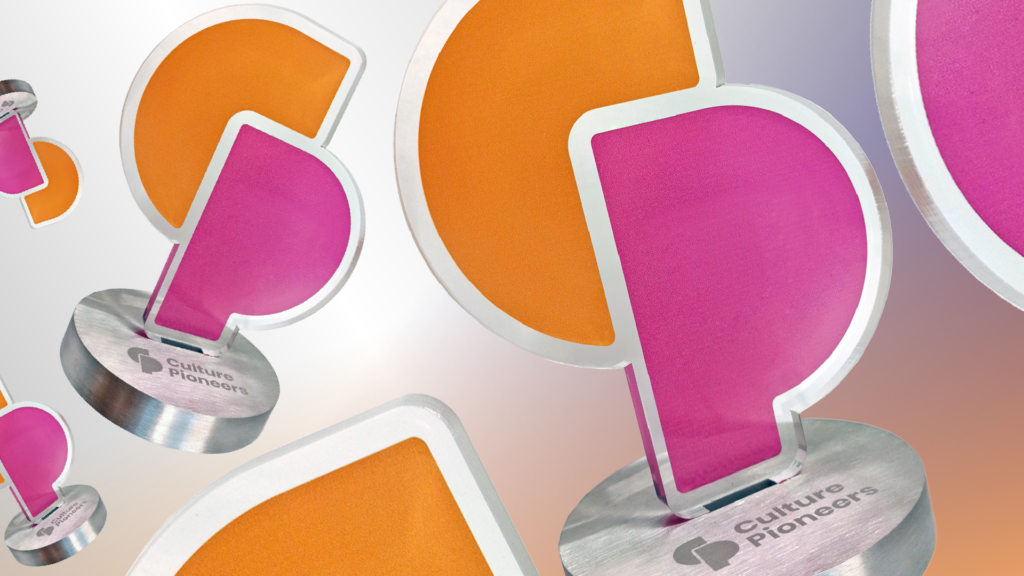Guinness’ slogan used to be ‘good things come to those who wait’. That’s true of your drinks, your garden, or the Masters you devoted years of evenings to – and we know it’s true of learning at work, too. This is why I’m worried about an L&D trend that the pandemic has only made worse.
Blended learning has lots of advantages, but when you’re dealing with subtle, complex, human skills, time to practise, live, with real people, has got to be part of the blend.
Before Covid-19 reared its head, we would regularly run daylong workshops on writing, or storytelling, or presenting – and quite often they’d be longer than that. We’d share a bit of ‘theory’, but most of the learning came from people trying things out, getting feedback, and having time to reflect. By the end of a day, you’d see a marked improvement in that person’s performance. Yes, it was an investment of valuable time – but good things come to those who wait.
When Covid-19 hit, like the good, agile, entrepreneurial business we were told to be, we adapted. (Luckily, we’d always had clients around the world, and tech clients, who liked doing things on video.) We chopped up our training into 90-minute chunks to suit the Zoom-fatigued – theory sessions for lots of people, then follow-ups in smaller groups so they got a chance to practise their skills. After a year of this, it’s clear that there’s something missing, however.
Diminishing investments of time
We found, as you probably did, that short, virtual training has its advantages. It’s great to space training out, so people get a chance to try things out and report back between sessions. There’s also a sort of democracy to the Zoom rectangle – everyone gets the same space. Clients told us that people who rarely spoke up in person were often much more likely to take their turn over video.
Pretty soon, however, some of our clients started squeezing that time. ‘Can you do an hour instead of 90 minutes?’ ‘We’ll do the theory, but people don’t have time for the practice. They can practice in their own time’. Well, they can – but will they?
Some people tell us they don’t have an hour, or half an hour. ‘Can you get this content into a ten-minute video?’ We want to be helpful, so we’re trying our damnedest to make those things work as well as they possibly can. After all, some learning is better than no learning, right? A voice keeps nagging at us, however, that says there’s just no substitute for time.
Blended learning has lots of advantages, but when you’re dealing with subtle, complex, human skills, time to practise, live, with real people, has got to be part of the blend. I think pretty much every L&D person, if they were honest with themselves, would agree.
The myth of the attention span
So, what do we do about it? First of all, we need to challenge the idea that people ‘won’t’ spend longer than ten minutes doing something. Yes, we live in the TikTok era – but we’re also used to binge-watching, where people will spend hours watching a long-form series like The Crown or Line of Duty, because it holds their attention. People just won’t spend longer than ten minutes on something if it’s boring. That means as L&D people we need to up our game to compete with the other things people could spend their precious time on.
A good L&D person is a feisty one
Second, we need to get bolshier. Some of the most successful L&D people we work with have got a bit of fight in them. When an internal client says they only have an hour to learn how to become more empathetic, they say, ‘well, that’s impossible – find more time’. We need to be confident that our expertise is just as valuable as our clients’, and if they’re suggesting something daft, we need to argue back.
Making training the reason to go to work
Finally, I’m hoping that the end of lockdown presents us all with an opportunity. While working from home has its advantages, staying away from offices has its downsides, too. Lots of us are craving some real time, in person, with our colleagues. What better reason to get together than some training? (After all, that doesn’t even have to be in the office, you could do it somewhere far more stimulating.) When we’ve all got used to doing the day-to-day stuff at home, a day of live training becomes even more special and valuable.
So let’s push back, and crack on. Let’s pat ourselves on the back that we helped people get any learning at all done during these tricky times, but make sure we now take the chance to get people to really invest some proper time in their development. After all, good things really do come to those who wait.
Interested in this topic? Read Reimagining blended learning in the new world of work.
Guinness’ slogan used to be ‘good things come to those who wait’. That’s true of your drinks, your garden, or the Masters you devoted years of evenings to – and we know it’s true of learning at work, too. This is why I’m worried about an L&D trend that the pandemic has only made worse.
Blended learning has lots of advantages, but when you’re dealing with subtle, complex, human skills, time to practise, live, with real people, has got to be part of the blend.
Before Covid-19 reared its head, we would regularly run daylong workshops on writing, or storytelling, or presenting – and quite often they’d be longer than that. We’d share a bit of ‘theory’, but most of the learning came from people trying things out, getting feedback, and having time to reflect. By the end of a day, you’d see a marked improvement in that person’s performance. Yes, it was an investment of valuable time – but good things come to those who wait.
When Covid-19 hit, like the good, agile, entrepreneurial business we were told to be, we adapted. (Luckily, we’d always had clients around the world, and tech clients, who liked doing things on video.) We chopped up our training into 90-minute chunks to suit the Zoom-fatigued – theory sessions for lots of people, then follow-ups in smaller groups so they got a chance to practise their skills. After a year of this, it’s clear that there’s something missing, however.
Diminishing investments of time
We found, as you probably did, that short, virtual training has its advantages. It’s great to space training out, so people get a chance to try things out and report back between sessions. There’s also a sort of democracy to the Zoom rectangle – everyone gets the same space. Clients told us that people who rarely spoke up in person were often much more likely to take their turn over video.
Pretty soon, however, some of our clients started squeezing that time. ‘Can you do an hour instead of 90 minutes?’ ‘We’ll do the theory, but people don’t have time for the practice. They can practice in their own time’. Well, they can – but will they?
Some people tell us they don’t have an hour, or half an hour. ‘Can you get this content into a ten-minute video?’ We want to be helpful, so we’re trying our damnedest to make those things work as well as they possibly can. After all, some learning is better than no learning, right? A voice keeps nagging at us, however, that says there’s just no substitute for time.
Blended learning has lots of advantages, but when you’re dealing with subtle, complex, human skills, time to practise, live, with real people, has got to be part of the blend. I think pretty much every L&D person, if they were honest with themselves, would agree.
The myth of the attention span
So, what do we do about it? First of all, we need to challenge the idea that people ‘won’t’ spend longer than ten minutes doing something. Yes, we live in the TikTok era – but we’re also used to binge-watching, where people will spend hours watching a long-form series like The Crown or Line of Duty, because it holds their attention. People just won’t spend longer than ten minutes on something if it’s boring. That means as L&D people we need to up our game to compete with the other things people could spend their precious time on.
A good L&D person is a feisty one
Second, we need to get bolshier. Some of the most successful L&D people we work with have got a bit of fight in them. When an internal client says they only have an hour to learn how to become more empathetic, they say, ‘well, that’s impossible – find more time’. We need to be confident that our expertise is just as valuable as our clients’, and if they’re suggesting something daft, we need to argue back.
Making training the reason to go to work
Finally, I’m hoping that the end of lockdown presents us all with an opportunity. While working from home has its advantages, staying away from offices has its downsides, too. Lots of us are craving some real time, in person, with our colleagues. What better reason to get together than some training? (After all, that doesn’t even have to be in the office, you could do it somewhere far more stimulating.) When we’ve all got used to doing the day-to-day stuff at home, a day of live training becomes even more special and valuable.
So let’s push back, and crack on. Let’s pat ourselves on the back that we helped people get any learning at all done during these tricky times, but make sure we now take the chance to get people to really invest some proper time in their development. After all, good things really do come to those who wait.
Interested in this topic? Read Reimagining blended learning in the new world of work.








